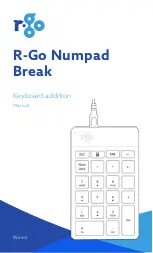
13-4
Storage Mode
Storage Mode Common Features
Storage Mode Common Features
The following features are used in storage mode when saving or loading files.
Directories
A directory lets you group files together as you might separate documents using folders in a file
cabinet. By default all storage devices have at least one “root” directory. To organize files in a USB
device you can create additional directories, as well as subdirectories within directories.
Directories appear in the file list with the indicator
<
dir
>
to the right of the directory name. See
The Utilities (UTILS) Page
on page 13-14
for details on creating, deleting, and renaming
directories.
Path
The Path field shows the current directory on the current device. This field is displayed when
loading,
saving, or exporting files in Storage mode. The PC3A always displays the root (top-
level) directory when you view a storage device.
The root directory is displayed as a backslash:
Path:\’
If you press the
LOAD
button and load a file from a subdirectory called SOUNDS, the Path field
will appear as
Path:\SOUNDS\’
The backslash character is a directory separator, as in the following Path:
Path: \NEWTUNE\SAMPLES\DOGS\’
This represents the directory DOGS, which is a subdirectory of the SAMPLES directory, which is
a subdirectory of the NEWTUNE directory in the root directory. If the path is too long to fit on the
top line of the display, it gets abbreviated. The maximum length of a path in the PC3A is
64 characters (including the backslash characters).
Common Dialogues
These are dialogues that the PC3A calls up when about to perform certain storage functions.
The Select Directory Dialogue
When storing an object—or group of objects—the PC3A prompt’s you to select a directory in
which to save that object or group.
There are three navigating soft buttons on the left side of the bottom of the page:
NewDir
Create new directory. Calls up the New Directory dialogue (see the following
section)
Open
Opens the highlighted directory.
Parent
Moves you up one level in the directory hierarchy. If the display is already at the root
directory, this button has no effect.
When you have chosen your directory, press the
OK
soft button to call up the File Name dialogue
(see the following section) and complete the storing process.
The File Name/New Directory/Rename Dialogue















































